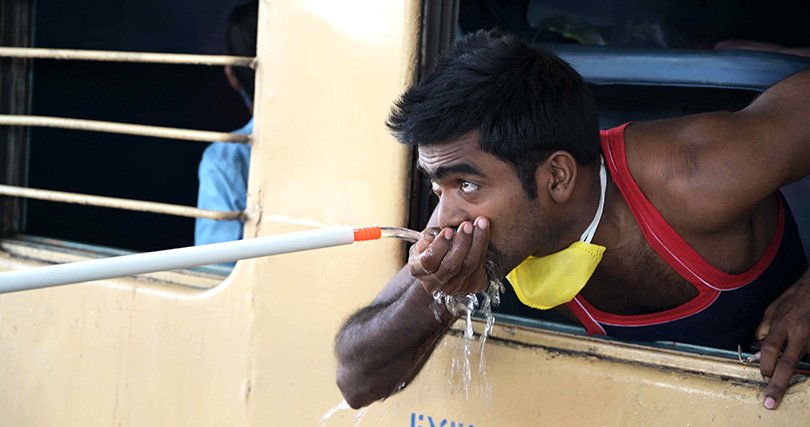For many, migration offers a way to escape the indignity of caste-based hierarchies. However, even though circular labour migrants frequently travel great distances from their rural homes to cities to find work, it would be inaccurate to interpret their movements as either ‘moving’ to an urban area or as any sort of upward social mobility. Nearly all migrate in order to provide a new source of income for an impoverished family back home, a family whose support is vital for them to migrate at all. The incomes they find are not sufficient to bring this entire family with them, and as such they are inextricably bound to where they have come from. They may travel back and forth yet their families will never be able to leave the village or join them in the cities.
Social distancing by/ from the state
Modi’s announcement gave Indians exactly four hours to prepare for the lockdown. With little reliable information available, migrant workers – like everyone else – wanted to be with their families back in their rural homes during such a time of crisis. For many, there was little choice as employment opportunities in the towns shrivelled up, landlords threatened to evict them from their homes due to impending non-payment of rents, and markets shut down without them getting a chance to purchase essential food items necessary for their survival. As transport services shut down, they were compelled to undertake their journeys on foot, traversing many hundreds if not thousands of kilometres to get home.
Over the next few days national and international newspapers reported horrifying stories of migrant workers being harassed, humiliated and brutalised by the Indian state. One video emerged of the police accosting migrant workers walking from Jammu to Bilaspur through Badayun in Uttar Pradesh, beating them up and forcing them to continue their journey leaping like frogs. Another emerged of police spraying migrant workers returning to their homes in Uttar Pradesh’s Bareilly district ordered to strip and then being sprayed with chemical disinfectants purportedly to sanitise them.
Over 200 people have died trying to reach their homes. Some – like 39-year-old Ranveer Singh – collapsed due to exhaustion, having walked 200 kilometres on foot under 35 degrees Celsius. Others – such as eighteen-year-old Lauram Bhagora – were run over by speeding vehicles on Indian highways. A one-year-old baby was among four people killed in a fire as they walked through a forest since no motorised transport was available. In May, sixteen migrants were mowed down by a speeding train when they fell asleep on train tracks due to exhaustion. More recently, migrant workers aboard the special Shramik Trains initiated by the government died of hunger and dehydration since neither food nor water was available. A woman on one of those trains died soon after alighting at her destination station also due to hunger and dehydration: a gut-wrenching video has been circulating of her little toddler trying desperately to wake her.
Contrasted with the alacrity with which India airlifted, on public expense, hundreds of its citizens stranded abroad, the Indian state’s bias against internal labour migrants are glaring indeed.
Such bias enmeshes with the social discrimination that migrant workers confront every single day of their lives. Indeed, maintaining social distance is integral to the class and caste segregation that permeates social life. Migrant workers, who face such segregation on account of their caste and religious origins, are told their place in the social hierarchy often enough. Even if they may not internalise such hierarchies, the class/caste restoration that India has witnessed in recent years compels them to lie low. The Indian state, nominally secular and socialist, repeatedly privileges the interests and aspirations of those ‘higher’ up the caste/class hierarchy at the expense of those ‘lower’ down. Although NGOs stepped in to provide food and shelter to many migrants, thereby offering them some succour, the ease with which the Indian state practiced social distancing against its internal migrants when they needed government support the most reveals its deeply-rooted structural bias.
PrintIndrajit Roy | Radio Free (2020-07-28T07:00:05+00:00) Social distancing between the state and poor migrants in India. Retrieved from https://www.radiofree.org/2020/07/28/social-distancing-between-the-state-and-poor-migrants-in-india/
Please log in to upload a file.
There are no updates yet.
Click the Upload button above to add an update.
